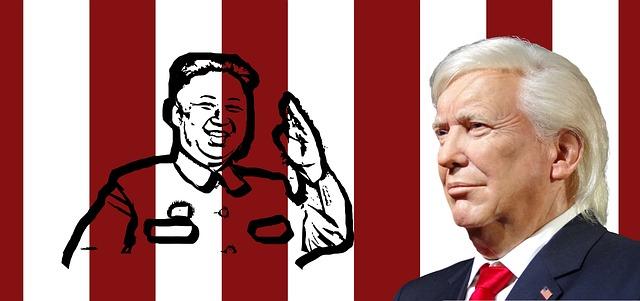The Trump administration’s proposal to impose a staggering 107% tariff on imported Italian pasta has sent shockwaves through Italy’s renowned pasta industry and the iconic Italian Market in Philadelphia. As producers and vendors grapple with the potential economic fallout, concerns are mounting over the impact on traditional supply chains, consumer prices, and long-standing cultural ties. This developing trade dispute underscores the broader tensions in U.S.-European relations and raises urgent questions about the future of international food commerce.
Trump Administration’s Proposed Tariff Sparks Uncertainty for Italian Pasta Exporters
The recent proposal by the Trump administration to impose a 107% tariff on Italian pasta imports has sent shockwaves through Italy’s renowned pasta industry, threatening to disrupt established trade flows. Small and medium-sized pasta producers, many of whom pride themselves on traditional crafting methods, fear that such steep duties would severely limit their access to the lucrative U.S. market, which accounts for a significant portion of their export revenue. Industry experts warn that this measure could lead to higher prices for American consumers, potentially reducing demand and forcing exporters to seek alternative markets or scale back production.
Closer to home, Philadelphia’s iconic Italian Market, known for its authentic pasta offerings, is bracing for impact. Vendors report early signs of supply uncertainty and rising wholesale costs, sparking concerns over their ability to maintain competitive pricing. Below is a brief overview of how the tariff could affect key stakeholders:
- Italian Producers: Profit margins under pressure, risk of production cuts.
- U.S. Importers: Increased costs lead to narrower margins or higher prices.
- Consumers: Possible price hikes and reduced product variety in markets.
- Local Vendors: Supply challenges and potential loss of sales during peak seasons.
| Stakeholder | Potential Impact |
|---|---|
| Italian Pasta Makers | Decline in U.S. sales, export shifts |
| Philadelphia Market Vendors | Rising inventory costs, supply delays |
| American Consumers | Higher shelf prices, limited availability |
| U.S. Distributors | Contract renegotiations, revenue fluctuations |
Impact on Philadelphia’s Italian Market Highlights Economic Ripple Effects
The proposed 107% tariff escalation threatens to ignite a cascade of economic repercussions in Philadelphia’s iconic Italian Market, a hub renowned for its vibrant cultural identity and authentic Italian goods. Local vendors, many of whom specialize in imported pasta and Italian delicacies, face soaring import costs that could disrupt their pricing structures and customer loyalty. The tariff would particularly strain small family-owned businesses already operating on narrow margins, raising concerns over potential layoffs and reduced inventory diversity.
Economists warn that the tariff impact extends beyond mere product prices, potentially influencing employment rates and foot traffic in the district.
Key concerns include:
- Increased cost of imported Italian pasta ingredients
- Reduced availability of specialty products
- Downward pressure on store revenues and employment stability
- Shifts toward alternative suppliers or domestic product substitutions
| Impacted Stakeholders | Potential Effect | Timeframe |
|---|---|---|
| Market Vendors | Higher product prices, lower margins | Short-term |
| Employees | Job insecurity, wage stagnation | Mid-term |
| Consumers | Reduced product variety, increased prices | Immediate |
| Local Economy | Decreased market vitality | Long-term |
Strategies for Pasta Makers and Retailers to Navigate Potential Trade Barriers
Facing the looming possibility of a 107% tariff, pasta makers and retailers must proactively diversify their approaches to sustain market presence and profitability. Key strategies include expanding sourcing options by partnering with producers outside Italy to mitigate supply disruptions. Additionally, leveraging local artisan pasta brands can cushion the blow of increased import costs while appealing to consumers seeking authentic yet affordable alternatives. Enhancing transparency around product origins and quality will also help maintain customer trust during this period of uncertainty.
On the retail side, businesses in iconic destinations like Philadelphia’s Italian Market are advised to implement price adjustments cautiously while emphasizing the cultural significance and heritage behind their imported goods. Strategic tactics involve:
- Promotional campaigns: Educate consumers on the impact of tariffs and the value of imported pasta.
- Inventory diversification: Stock a mix of tariff-affected and tariff-free items to balance costs.
- Advocacy and collaboration: Engage with trade groups to lobby for mitigation or exemptions.
| Strategy | Benefit | Implementation |
|---|---|---|
| Sourcing Diversification | Reduced dependency on Italian imports | Identify alternative European suppliers |
| Promotional Campaigns | Build consumer awareness and loyalty | In-store tastings, social media stories |
| Inventory Mix | Cost control and product variety | Blend tariff-affected with local products |
The Conclusion
As uncertainty continues to loom over the potential imposition of a 107% tariff on imported Italian pasta, both Italy’s revered pasta producers and Philadelphia’s historic Italian Market brace for the economic ripple effects. While stakeholders await further developments, the looming threat underscores the complex interplay between international trade policies and local economies, highlighting the challenges faced by small businesses and cultural institutions caught in the crossfire of geopolitical decisions.
















